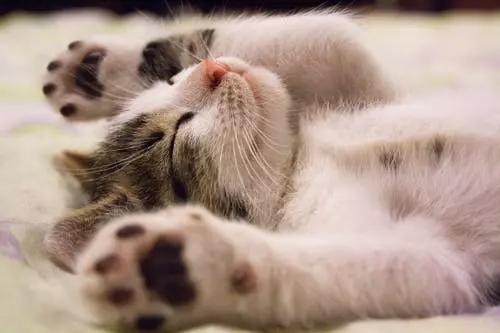Introduction:
Taking care of your cat’s grooming needs is an essential part of being a responsible cat owner. While cats are known for their meticulous self-cleaning habits, there may come a time when you need to give your furry friend a bath. In this comprehensive guide, we will walk you through the steps of how to bathe a cat safely and effectively. Additionally, we will address some common FAQs to ensure you have all the information you need for a successful cat bathing experience.
Why might you need to bathe your cat?
There are several reasons why you might need to bathe your cat. Medical reasons, such as skin conditions, may require regular bathing. Flea or tick infestations also often require bathing to eliminate the pests. Allergies can cause skin irritation, which may necessitate bathing. Additionally, bathing can help maintain the cleanliness and health of your cat’s coat. Lastly, special occasions, such as shows or events, may require your cat to be bathed to look their best.
Preparing for the bath
Before beginning the bathing process, it’s important to gather all the necessary supplies. This includes cat-friendly shampoo, towels, a non-slip mat or towel for the bathing area, and treats for positive reinforcement. Choose an appropriate bathing area that is easy to clean and has enough space for your cat to move around comfortably. It’s also a good idea to trim your cat’s nails beforehand to prevent any accidental scratches. Lastly, brush your cat’s fur thoroughly to remove any tangles or mats.
Steps to bathe your cat
1. Introduce your cat to the bathing area: Allow your cat to explore the area and get comfortable before starting the bathing process.
2. Gradual acclimation to water: Use a gentle stream of lukewarm water to gradually acclimate your cat to the sensation of being wet.
3. Wetting your cat’s fur: Thoroughly wet your cat’s fur, making sure to avoid getting water in their ears, eyes, and nose.
4. Applying cat-friendly shampoo: Apply a small amount of cat-specific shampoo and gently massage it into your cat’s fur, focusing on any problem areas.
5. Rinsing off the shampoo: Thoroughly rinse your cat’s fur with lukewarm water, making sure to remove all traces of shampoo.
6. Drying your cat properly: Use a towel to gently pat your cat dry, being careful not to rub their fur. If your cat tolerates it, you can also use a hairdryer on the lowest setting, keeping it at a safe distance from your cat’s skin.
7. Post-bath rewards and positive reinforcement: Reward your cat with treats and praise for their cooperation during the bathing process.
Tips for a successful cat bathing experience
– Use lukewarm water: Cats are sensitive to temperature, so make sure the water is comfortably warm, but not hot.
– Use cat-specific shampoo: Human shampoos can be too harsh for cats and may cause skin irritation. Opt for shampoos specifically formulated for cats.
– Be gentle and patient: Approach the bathing process with gentleness and patience, as cats can be sensitive and easily stressed.
– Use a non-slip mat or towel: Place a non-slip mat or towel in the bathing area to provide your cat with stability and prevent accidents.
– Keep the bathing session short: Cats generally do not enjoy being bathed, so it’s best to keep the process as short as possible to minimize stress.
– Have treats ready for positive reinforcement: Reward your cat with treats and praise throughout the bathing process to create positive associations.
FAQs about bathing cats
Q: How often should I bathe my cat?
A: Most cats do not require frequent baths as they are skilled groomers. However, if your cat has a medical condition or gets extremely dirty, bathing may be necessary. In general, bathing your cat once every few months should suffice.
Q: Can I use human shampoo or soap to bathe my cat?
A: No, it is not recommended to use human shampoo or soap on cats. These products can be too harsh for their sensitive skin and may cause irritation. Opt for cat-specific shampoos that are gentle and formulated for their specific needs.
Q: Should I use a hairdryer to dry my cat?
A: It is generally best to avoid using a hairdryer on your cat, as the noise and heat can be distressing for them. Instead, use a towel to gently pat them dry or allow them to air dry in a warm and draft-free room.
Q: What if my cat hates water and refuses to be bathed?
A: If your cat absolutely refuses to be bathed, it may be best to seek professional grooming services. Alternatively, you can try using waterless cat shampoos or wipes to clean your cat’s fur without the need for a full bath.
Conclusion:
Bathing your cat may not be a task you have to undertake frequently, but being prepared and knowledgeable about the process can help ensure a stress-free experience for both you and your feline companion. Remember to approach the task with patience, gentleness, and plenty of positive reinforcement. With the information provided in this guide, you are well-equipped to keep your cat clean and healthy when the need arises.








